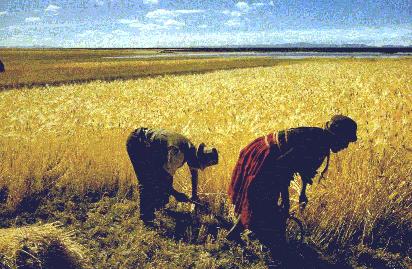Conclusion
Incas
: Development and Maintenance of an Agrarian Empire
Conclusion

The Inca Empire is often viewed solely in terms of its architectural achievements. Popularized by widespread tourism, the temples of Machu Pichu and mortarless stone walls are some of the most photographed images in the world. The significance of this society, however, should not be thought as a collection of abandoned ruins. A deeper understanding of this community must be considered.
The Incas addressed the problem of geographic distribution and a finite resources base, through a series of creative innovations. The diversification of crops and flexibility in plantings encouraged the expanse of population in otherwise inhospitable environments. Preservation technologies allowed for the buildup of large reserves of foodstuffs. These stores could then be drawn upon and distributed during times of war or famine. The Incas effectively maintained a balanced order by providing their citizens with a dependable source of food regardless of external circumstances. This was completely revolutionary in terms of organization when compared to contemporaneous communities.
Although the social welfare state is often considered an innovation of the twentieth century, the administrative body of this community operated in a similar system. Deriving their authority from a theological relationship with the Sun God, the Incas were able to instill trust within the local communities as both protector and provided. Customs and local practices were generally accepted until integration into the parent community occurred. In this manner, the Incas practiced one of the earliest forms of cultural assimilation.
Instead of looking into the past, the Incas should be considered as a model for future development. Peru, one of the many industrializing nations of South America, is slowly approaching population stability. As it reaches this level, domestic food subsistence becomes increasing important in furthering the economic development of the country. Irrigation and terrace techniques practiced fifteen hundred years ago are being recovered and combined with modern industrial fertilizers and gasoline powered machinery to produce some of the highest yields ever recorded. Thus, ancient and modern culture has been fused for the benefit of creating a better community.
Previous Page: Economy | Next Page: Appendix